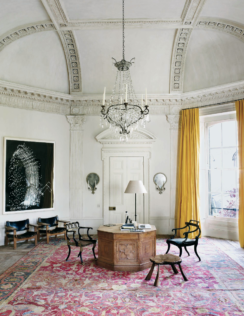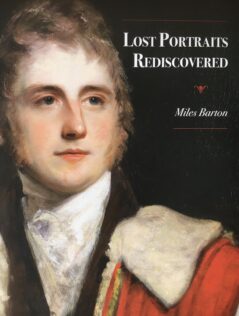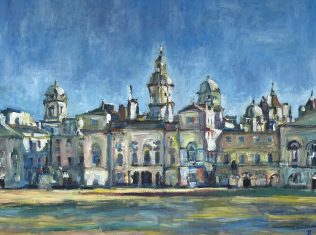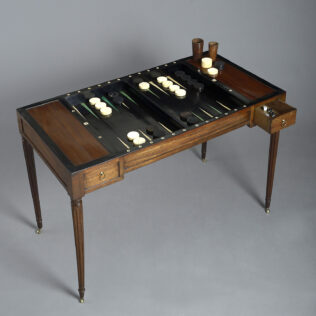Although, stylistically speaking, the British Regency Period only refers to a timeframe of a decade either side of 1810, it churned out an impressive number of extraordinarily impactful furniture, embodying the flavour of the age in the Kingdom.

The invigorating spirit that followed the Age of Enlightenment was almost palpable and the Regency Period witnessed a great number of tremendously stirring developments, both at home and abroad.
Whilst British soldiers were entangled in battle with the French in the Mediterranean (from 1798), at the Cape of Trafalgar (1805) and Waterloo (1815), those who remained at home danced the Walz (1812) in their new ‘Empire Line’ dresses, studied the Elgin Marbles at the British Museum (1818), fell in love with Darcy of ‘Pride and Prejudice’ (1813), founded the London Stock Exchange (1801) and built Piccadilly Circus (1818).
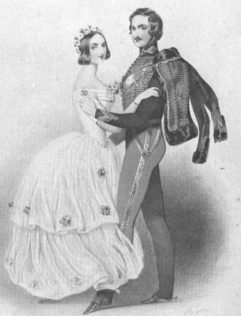
At this, artists and cabinetmakers translated their fascination with the power of the ‘British Commonwealth of Nations’ (a term coined in 1817) as well as their interest in the history of civilisation, art and architecture, which -after all- paved the way for their cultural awakening, into their works. It follows that the underlying theme for Regency furniture was taken from the ancient and the classical; and whilst pieces were certainly grand, they never failed to be tidy, neat and rigorously symmetrical.
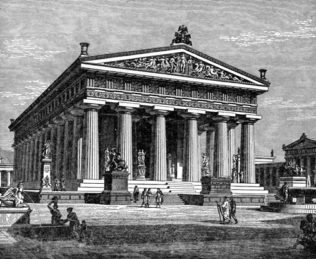
Greco-Roman architectural motifs such as doric, ionic, composite and caryatid columns, mouldings, fluting, decorated friezes and tympanums were carved into wood; Egyptian symbols like stars, feather flowers, sphinxes and Pharaohs were applied to adorn drawers, doors and panels; and military insignia including brass medals, laurel wreaths or sabre shaped legs lent the finishing touches.
To add warmth to these otherwise slightly stiff, architectural creations, cabinet makers turned to woods with attitude. Rosewood and mahogany, which were easily available, were often favoured due to their rich colour and texture.
The result was phenomenal. Raw material was transformed into gilt metal marquetry, inlay of trailing foliage, scrolled hands and feet, greek key patters, sabre legs and lion’s paw feet, all arranged on calm, strong wooden backgrounds to mark the start of a truly modern era.
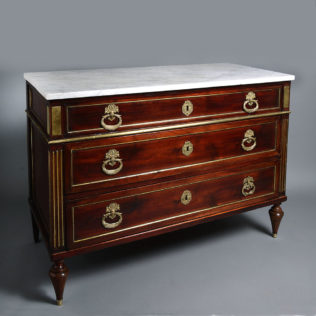
A very good example of such a Regency product is the Klismos Chair. An elegant, fundamentally simple chair developed by the ancient Greeks, sporting sabre legs and uninterrupted symmetry. This example can be found either simply decorated or rather more elaborate, including carved and painted tassels, scroll feet and sometimes even lion’s paws, never failing to honour the classical rational.
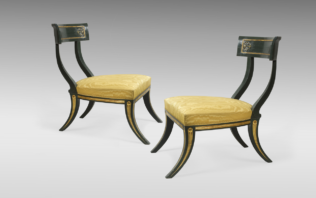
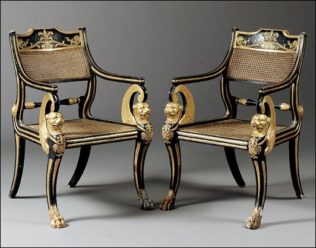
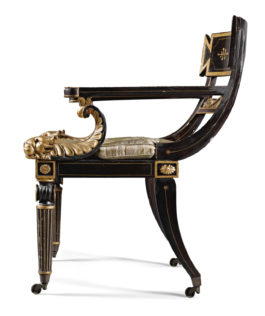
The 200th Anniversary of Waterloo has seen a revival in Regency. At this, modern furniture is juxtaposed against Regency chests, chairs and tables. This not only lends homes an air of sophistication, but also adds warmth, eclecticism and style.
